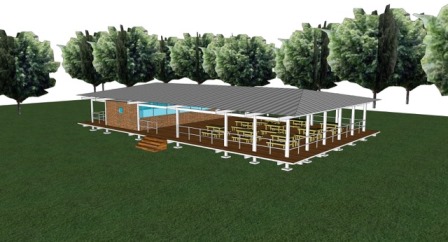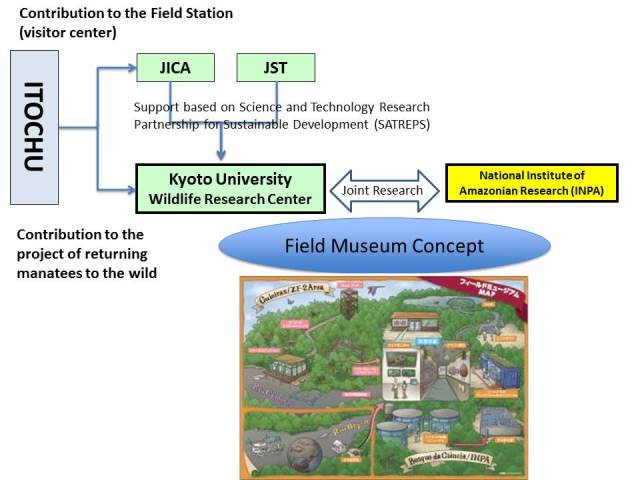ITOCHU Announces Support for Amazon Ecosystem Conservation by Contributing to the Construction of Field Station, a Research Facility
April 12, 2017
ITOCHU Corporation (headquartered in Minato-ku, Tokyo; Masahiro Okafuji, President & CEO; hereinafter “ITOCHU”) announced today that it would contribute 19 million yen to Japan International Cooperation Agency (JICA) to fund the construction of the Field Station. It will be a research facility and visitor center under the Field Museum Concept in the Amazon region in Brazil. Through this initiative, ITOCHU aims to achieve environmental conservation--one of the activities set forth in its Basic Activity Guidelines on Social Contributions--and contribute to ecosystem conservation in the Amazon, which face a crisis of the loss of its rich biodiversity.
Since 2016, ITOCHU has supported the project of returning Amazonian manatees to the wild, one of the activities under the Field Museum Concept. Now ITOCHU will contribute additional funds for the construction and development of a facility (visitor center), including a cafeteria and an exhibition hall for visitors to gather, for the Field Station, a research facility to study the tropical forest and its ecosystem in the Amazon. Construction is planned to start in FY2017. Through this facility, ITOCHU will provide opportunities to experience the abundant nature and wide variety of plants and animals living in the Amazon tropical rainforest and will contribute to environmental education for local residents and tourists.
This is the first case where JICA is working together with a private company to conserve the Amazon’s ecosystem.
|
Conceptual drawing of Field Station (Visitor center) |
Field Museum Concept
In Manaus, a city located in the heart of the Amazon in Brazil, there is an ecosystem that is particularly valuable and diverse, even for the Amazon. However, it has been damaged as a result of the rapid expansion of the city. At both Kyoto University and the National Institute of Amazonian Research (INPA), research and promotional activities have been carried out for ecosystem conservation by showing the regional habitat and the living creatures themselves, taking advantage of the location of Manaus, unlike the style of displays that are found inside conventional museum buildings. This series of actions is known as the Field Museum Concept.
With the use of Japanese cutting-edge technologies, through research and conservation of endangered species and their habitat and the provision of environmental training for local residents, the Field Museum Concept aims to contribute to the sustainable development of the local community.
This is one of the projects of SATREPS, on which the Japan Science and Technology Agency (JST) and JICA work jointly. In SATREPS, researchers from Japan and developing countries jointly conduct research on resolving global issues and the future societal utilization of research outcomes in three to five years.
Correlation diagram
|
|
Field Station
One of the major facilities in the Field Museum Concept, a facility for the long-term monitoring research of animals and plants in the protected area of INPA and for experiencing the ecosystem. Construction is scheduled to start in FY2017. In addition, a visitor center will be built and an estimated 5,000 visitors per year are expected. Environmental training and education for local residents are also planned.
In constructing the facility, a portion of secondary forest will be selected instead of the primeval forest in the Amazon. The construction will proceed with sufficient care for the environment, after INPA confirms the absence of rare species in advance through investigations of the neighboring natural environment and permission is granted by government-affiliated agencies.
<Research themes currently planned>
- Habits of electric fish and small fish
- Seasonal changes of underwater sound in rivers by using acoustic technology
- Returning manatees to the wild
- Habits of mammals and birds investigated using sensor cameras
- Exploration of flora in flooded forests and other forests


